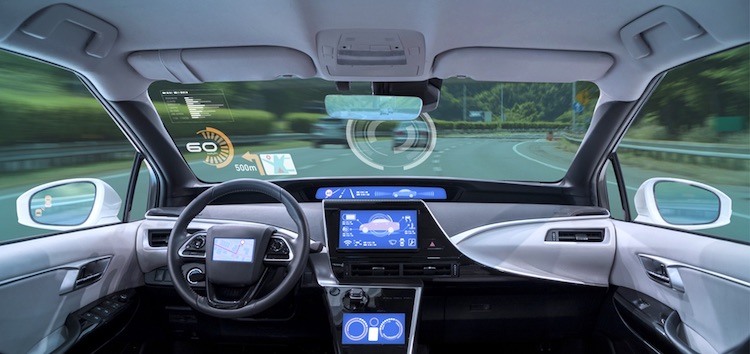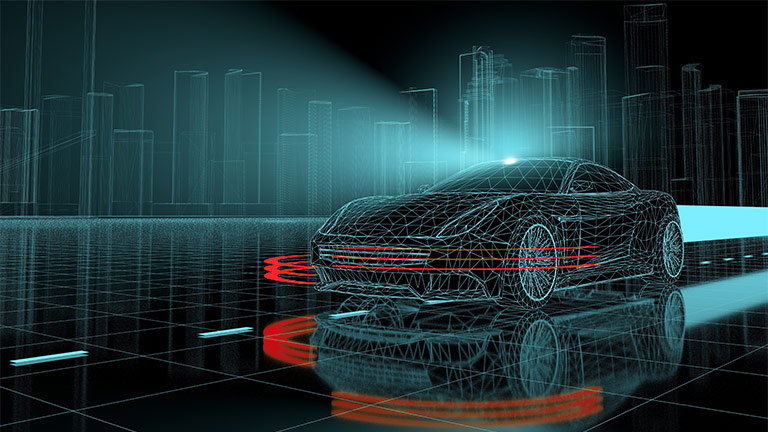
Avnet poised to play key role in next-generation automotive technology
The automotive industry is undergoing an historic transformation which will fundamentally shift the way vehicles are manufactured as well as change the way we look at and use cars, and possibly all road-going automobiles.
In-keeping with the widespread trend, Avnet, one of the world’s leading distributors of electronic components, is taking a leading position in developing the technologies required to make the future a reality.
A number of predictions are being made for the automotive industry, and many of them may have sounded outlandish in the past, but now that the public at large has accepted driverless cars as a realistic concept, anything is possible – even flying cars.
Whilst staying on the ground for this article, the goal of building a new generation of cars is helping to organise resources and ideas around what is becoming an increasingly clear conceptual ecosystem.
What’s also helped is the engineering association SAE’s articulation of the levels of automation that a vehicle might have, from 0 to 5 as follows:
- Level 0: No autonomy, purely mechanical;
- Level 1: Minimal autonomy, driver assistance systems for some functions;
- Level 2: Partial autonomy, but human driver remains in control in every aspect;
- Level 3: Conditional autonomy, with some functions not requiring direct human control;
- Level 4: High autonomy, advanced driver assistance systems that can perform most functions, but human driver in ultimate control; and
- Level 5: Full autonomy, or driverless, with all functions completely controlled by the car or computer itself.
According to the National Highway Traffic Safety Administration, “self-driving vehicles ultimately will integrate onto US roadways by progressing through six levels of driver assistance technology advancements in the coming years.”
For Avnet, a number of key technologies are in immediate demand that fit in to all of the above categories of automation or autonomy. They are:
Autonomous driving and ADAS: Advanced Driver Assistance Systems (ADAS) are becoming increasingly sophisticated, with previously basic computer vision integrating collision avoidance and object detection functions, among others, using LiDAR and radar.
In-cabin artificial intelligence: As we all know, AI is involved more and more in driving, which means that electronics will become the next big technology market driver. Cars and trucks are also connecting to the cloud, and increasing availability is making in-cabin AI affordable across all vehicles.
Instrument cluster, infotainment and display: Touchscreen virtual dashboards which dispense with any mechanical parts, as well as voice-activated functions, are increasingly emerging as the dashboard of choice for automotive manufacturers and their customers.
Electrification: The move from petrol engines to electric is probably the change that most people will be the most prominent in people’s minds, and Avnet says electrification is likely to span more functions than currently imagined, and therefore provide more opportunities for automotive applications developers.
Platforms, sensors and chips: Some experts say that in the future, vehicles will more or less build themselves. They’ll start as little more than a wheeled platform, then go from one robotic cell to another, gradually being built to a complete product. Increasingly sophisticated and application-specific sensors and chips are also being designed for this trend, which could see the end of the historic assembly line in automotive manufacturing.

Just in CASE
Toyota, one of the world’s largest automotive brands, encapsulates the changes happening in the industry in one word – CASE, acronym for “connected, autonomous, shared, electric”.
Although self-explanatory, it’s interesting to delve into the implications of each of the words.
Connected: If there are some people left who don’t quite get what the internet of things is, then connected cars may help them to understand. Terms like V2X, meaning vehicle to anything or infrastructure, and V2V, referring to vehicle-to-vehicle communications, will open up new ways of driving and connect up everything into one massive matrix. Such pervasive connectivity may be what will be required to make driverless vehicles work safely in crowded and unpredictable urban environments.
Autonomous: Although ultimately we are talking about driverless cars, as listed above, the many levels of autonomy mean that humans are unlikely to be left out of the loop for many years to come. Many people might not be aware – especially if they don’t own or drive a newer car – that most new vehicles actually pack a huge amount of autonomous functions, from emergency braking to self-parking, and so on. It’s much more than just cruise control anyway.
Shared: Older generations of drivers may find it odd to think of sharing cars with total strangers, but in this world of Uber taxis and rent-a-bikes, younger generations seem to be increasingly accustomed to the idea of not owning cars. It’s a sensible option because they probably won’t have to worry about parking and the relatively high cost of insurance and maintenance. Certainly the automakers are planning for a future where shared mobility services are a significant part of the transportation systems of every advanced, industrialised country.
Electric: The general public, and probably most politicians who are not supported by big oil, have been fed up with fossil fuels coming out of exhaust pipes and polluting the atmosphere, not to mention the geopolitical shenanigans oil and gas reserves cause. So, the move to electric has many advantages and the groundswell of support for the technology has become impossible to ignore for most countries’ leaders.

Tech stock
It’s difficult to comprehend the enormity of the change happening in the automotive industry, even though it’s much-discussed and very well articulated and planned for, as outlined above.
The trend has been called the greatest economic opportunity in history, and has the potential to completely transform not only the automotive industry, but also industrial countries themselves, and the entire global economy.
Buying an electric car isn’t just a quirky, clean-living option anymore – it’s an individual choice that has gargantuan consequences. If it was just a few people here and there making isolated purchases, it wouldn’t matter as much. But it’s not.
Electric car sales are increasing every year in most countries, and in some countries, more new electric cars are being sold than new petrol cars.
And although the subject of hydrogen fuel-cell versus lithium-ion batteries is outside the scope of this article, it’s worth mentioning that hydrogen holds promise for long-haul journeys, meaning trucks and other parts of the logistics chain will find the technology useful.
In other words, the automobile as we know it now is almost dead. Long live the new generation of automobile.
